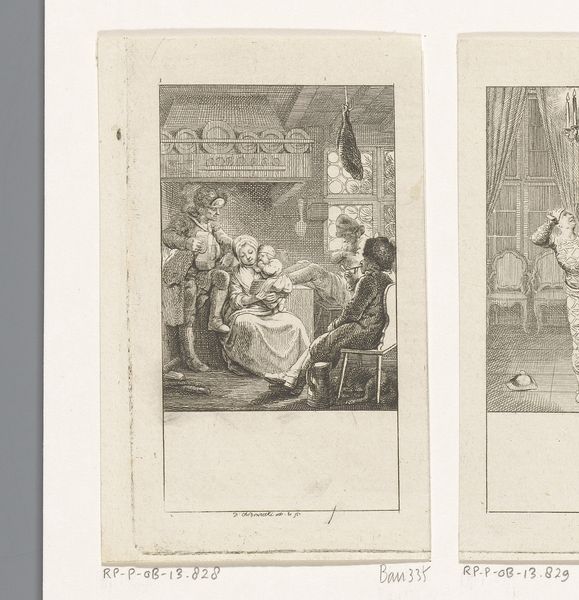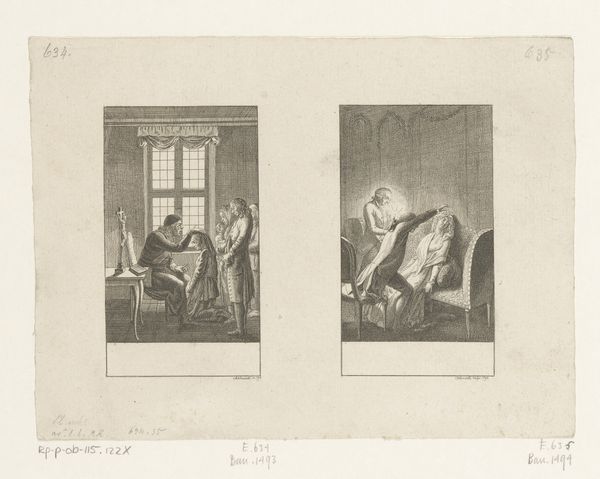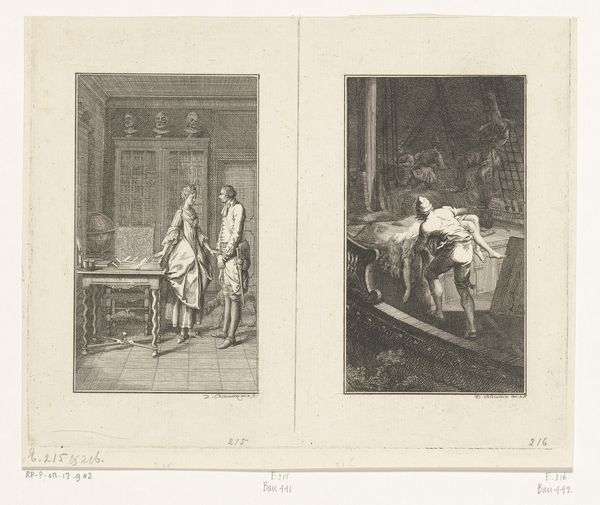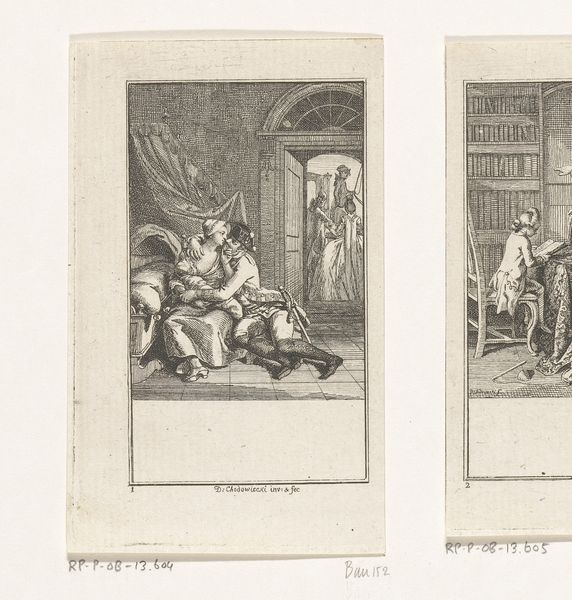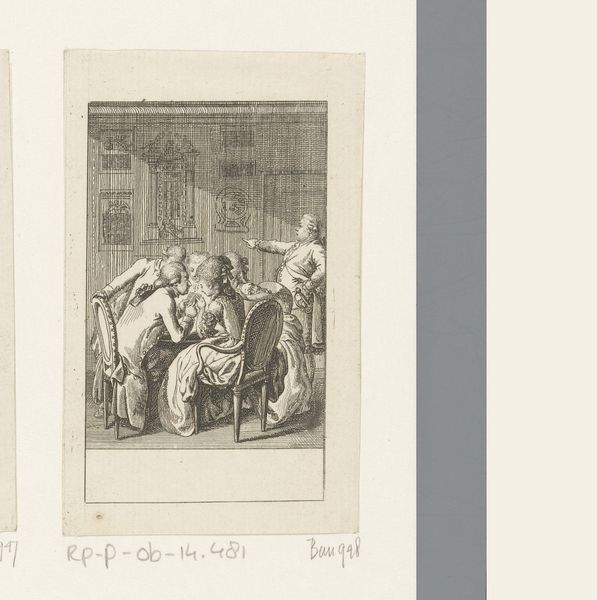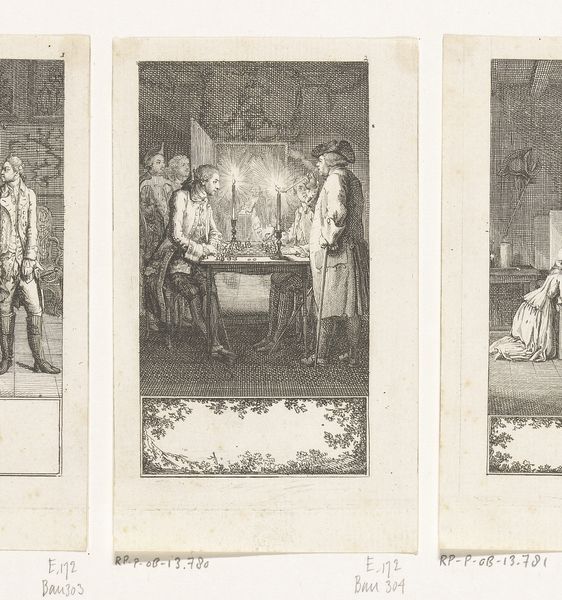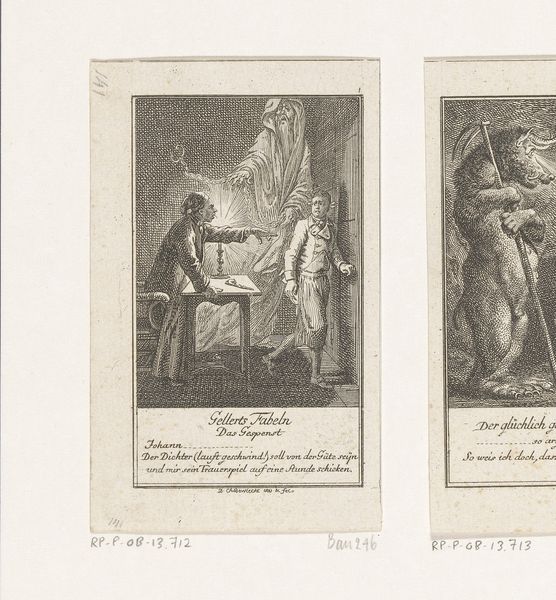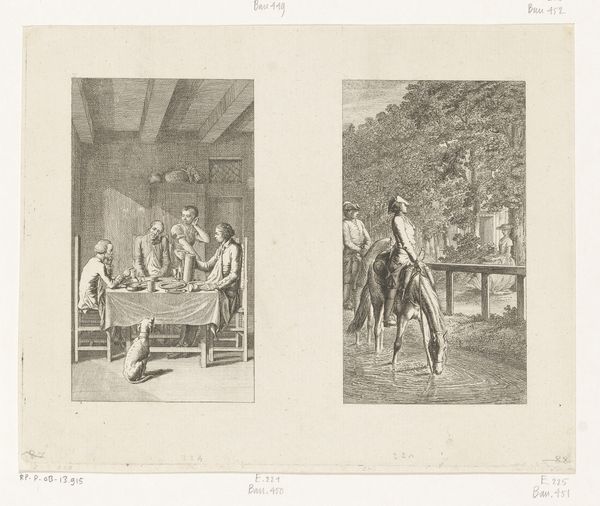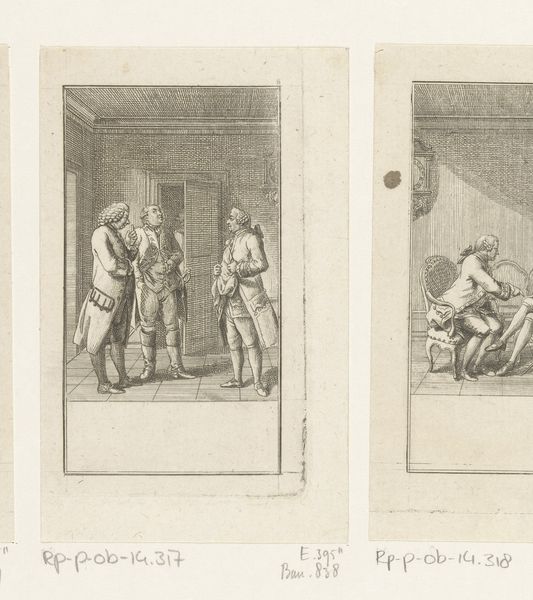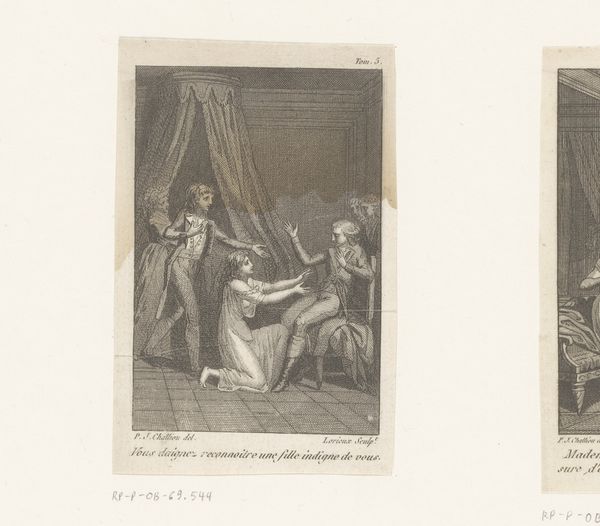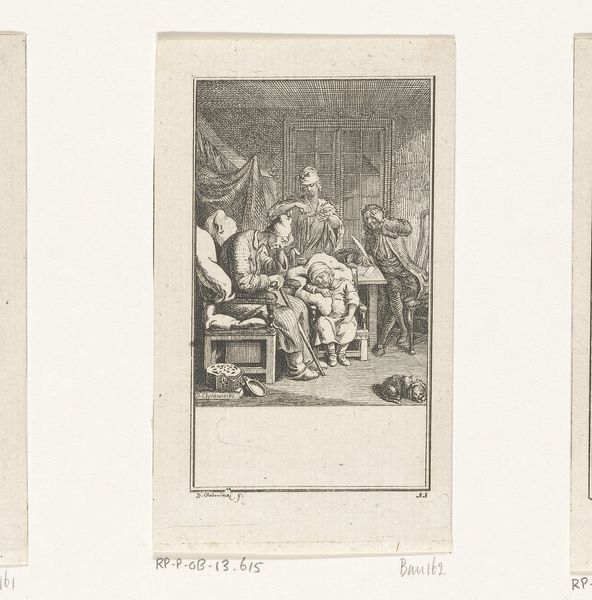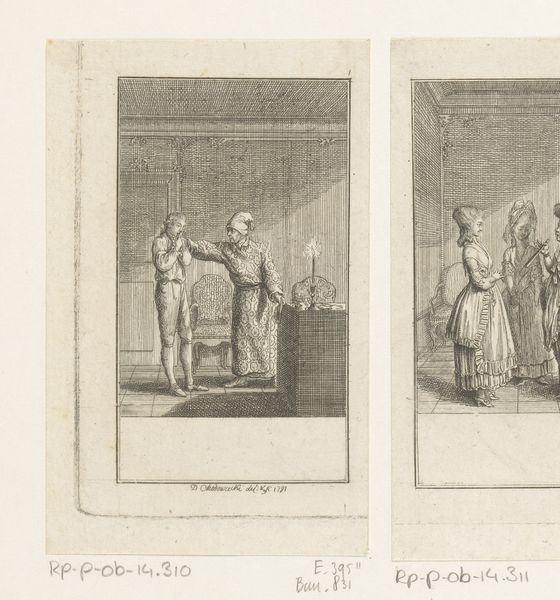
Dimensions: height 95 mm, width 53 mm
Copyright: Rijks Museum: Open Domain
Curator: Let’s have a look at "Feind en zijn leraar," or "Enemy and his teacher," a print made in 1776 by Daniel Nikolaus Chodowiecki. The Rijksmuseum houses this interesting example of Romanticism. What is your initial reaction to it? Editor: There's a rather formal, almost stilted feeling to the image, despite being a domestic scene. It's the detail, perhaps—the etching gives everything such weight and presence. A somber scene overall. Curator: Indeed. What draws my attention is the material process. Look at the precision and labor involved in the engraving technique. Chodowiecki was a master printmaker, known for illustrating everyday life and historical moments for a broad audience, who was beginning to be literate and wanting imagery for literature. This print, produced using relatively inexpensive materials, would have made this scene available to people beyond the elite circles normally consuming art. Editor: And considering its role as an illustration, we should analyze the visual narrative. The figures occupy distinct spaces within the frame. The seated man, presumably the teacher, seems resigned, almost defeated. The standing figure is tense, with an averted gaze. This pose speaks volumes—betrayal, regret, conflict, perhaps even suppressed anger. The room behind is decorated with a busy aesthetic, which, if anything, amplifies the human story here. Curator: It also points to the shift in art's purpose. No longer were prints exclusively for religious or aristocratic purposes. They depicted domestic narratives and sentimental situations in direct contact with a budding new bourgeois class, that wanted material affordable and reachable. Editor: The artist uses imagery steeped in moral weight, which is heightened by the clarity that the printing allows. It becomes a conversation between figures weighted by their own significance, framed by an important context in history of material culture. Curator: Ultimately, this little print invites us to reflect on shifts both material and sentimental that characterized the rise of this art. Editor: Yes, a confluence of societal shift, art's significance and human nature is on full display here.
Comments
No comments
Be the first to comment and join the conversation on the ultimate creative platform.

